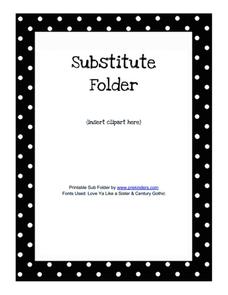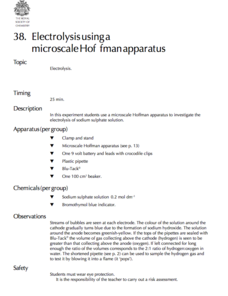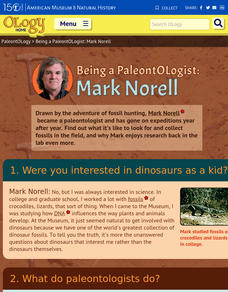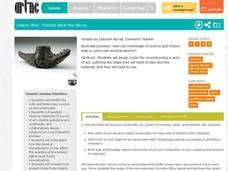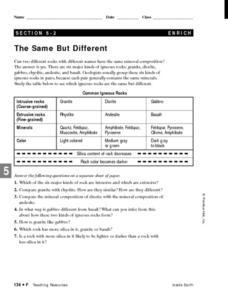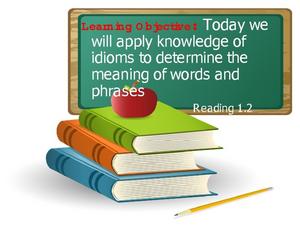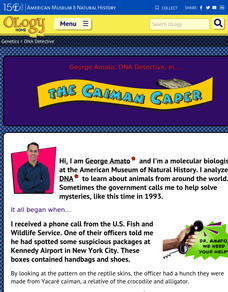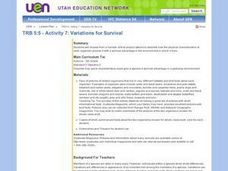Crocodile Teacher Resources
Find Crocodile lesson plans and worksheets
Showing 270 resources
PEGAMES.org
RPS evolution
Stuck inside on a rainy day for PE? Try a fun game that will get your little learners moving around inside during wet weather. The game involves moving like various animals and peer interaction through games of rock-paper-scissors.
Curated OER
Mayflower and Speedwheel Trip to the New World
Fourth graders compare the voyage of the Speedwell versus the Mayflower. In this historical voyages lesson, 4th graders analyze the differences between the two voyages, learn about the conditions sailing aboard the Mayflower, and sing a...
Curated OER
Internet Fact Hunt at the "Fact Monster" Web Site- April #4
In this Internet fact hunt worksheet, students access the "Fact Monster" web site to answer 5 multiple choice questions. They answer science, weather, sports, and invention questions.
Curated OER
Metaphor Meanings
Help your young writers decipher the literal meanings of metaphors. After reading several metaphors, learners write the real meanings that the phrases are describing. Use this resource in a figurative language lesson, or when preparing...
Curated OER
Comparez les animaux
Beginning and intermediate French language learners use the phrases plus que, moins que, and aussi que to compare animals with a one-page learning exercise. After comparing a list of animals provided, writers are encouraged to craft...
PreKinders
Sub Folder
Erase the stress and anxiety of calling in a substitute teacher with this collection of materials. From a class roster and rules, to a set of emergency activities and lesson plans, this resource includes everything...
EngageNY
Determining the Equation of a Line Fit to Data
What makes a good best-fit line? In the 10th part of a 16-part module, scholars learn how to analyze trend lines to choose the best fit, and to write equations for best-fit lines to make predictions.
Royal Society of Chemistry
Electrolysis Using a Microscale Hoffman Apparatus—Microscale Chemistry
Get big results out of a small-scale lab! Young chemists observe the electrolysis of sodium sulfate using a microscale experiment. A colorful indicator solution combined with the production of gas bubbles yields a variety of observations...
Anywhere Math
Box-and-Whisker Plots
Whiskers are more than just a cat facial feature! Learn how the whiskers of a box-and-whisker help make conclusions about a data set. An instructor first explains how to create a box-and-whisker and then how to read it. Several examples...
American Museum of Natural History
Being a Paleontologist: Mark Norell
Get to know paleontologist Mark Norell with a 19 question interview. Written questions, answers, and photographs with descriptions sit among bright and cheery graphics
Curated OER
Responding to Literature: James and the Giant Peach
Fifth grade reader/writers create an alternate ending to an episode in Roald Dahl's James and the Giant Peach in which our protagonist "loses" the chance to magically solve all his problems. Prompts students not only to write creatively...
Curated OER
Putting Back the Pieces
Seventh graders become museum conservators and undertake the hypothetical restoration of an ancient American work of art. Groups design a plan for reconstructing the work of art, outlining the steps they need to take and the materials...
Curated OER
The Same, But Different
Third graders examine the phase change between solids and liquids and determine it to be a physical change. Ice is the perfect item to use to demonstrate this phase change. Pupils experiment with measuring and weighing solid ice and the...
Curated OER
What Makes Jokes Funny?
Explore how language is used for comic effect. Middle schoolers determine which of the three formulas for jokes (double meanings, unexpected outcome, humorous mental image) make each of 18 classic, corny examples funny. They complete a...
Curated OER
Famous Authors - Roald Dahl
Here is a colorful, and informative presentation on the brilliancy of author Roald Dahl - my personal favorite children's author! This presentation focuses on how he plays with our language to create new words and phrases to help...
Curated OER
Knowledge of Idioms
What is an idiom, and why is it necessary that we know and understand them? This brief PowerPoint helps answer these questions by looking at examples and offering a strategy for reading new text that might contain an idiom. The final...
LABScI
Circuits Lab: Lightbulbs
Electrons flow from negative to positive, but the general consensus is that current flows from positive to negative. Scholars explore current through construction of circuits in both series and parallel. The focus is on voltage,...
American Museum of Natural History
DNA Detective
DNA is like the fingerprint of genetics. A quick lesson introduces the topic of DNA sequences with a mystery about an endangered species. The lesson shows how DNA extraction, replication, and sequencing often provide undeniable evidence...
American Museum of Natural History
The Tree of Life
Groups of species can have more in common than meets the eye. An interactive cladogram shows some of the connections between important groups of species. Learners click on sections of the diagram to learn more about the connections or on...
American Museum of Natural History
DNA Detective
Match up the DNA code. Pupils read the website from the American Museum of Natural History about how DNA can determine whether a skin is from a particular type of reptile. Using the same technique, learners match up products with the...
Curated OER
Reading Comprehension Quiz
In this reading comprehension quiz learning exercise, students read 3 different selections, then answer a set of multiple choice questions for each. Answers can be submitted and scored on line.
Curated OER
Summarize This!
Students explore how to summarize a reading passage. They read non-fiction books. Students use a Venn Diagram to compare and contrast the two animals they read about. They write a summary using the information in their Venn Diagram.
Curated OER
Variations for Survival
Fifth graders examine two related organisms that live in different environments and compare how the physical characteristics of each organism provided it with survival advantages unique to its own environment.
Curated OER
Was it Fair for the Elephant's Child?
Pupils use literature to explore ideas of justice. They discuss what makes something fair or unfair. They draw and explain cartoons that tell the story.







